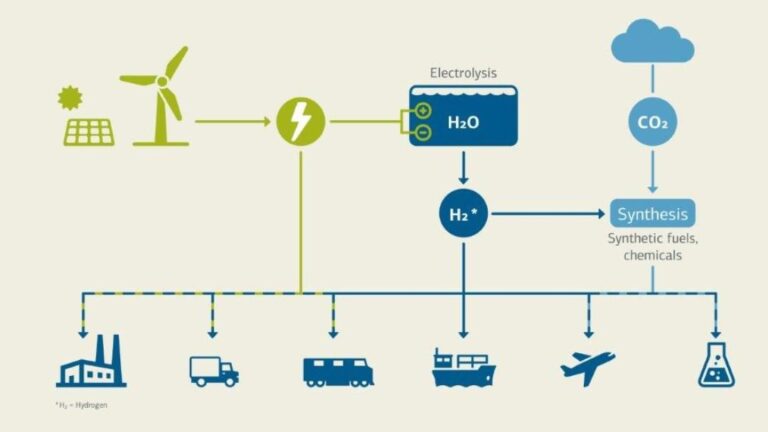Germany has taken a significant leap forward in the pursuit of sustainable energy with the commissioning of the H2Mare offshore platform dedicated to green hydrogen and Power-to-X research. This pioneering facility, situated in the North Sea, marks a vital milestone in the country’s ambitious efforts to advance renewable hydrogen technologies and integrate them into its energy transition strategy. Developed to support large-scale production and innovative applications of green hydrogen, the H2Mare platform is set to play a crucial role in meeting Germany’s climate targets while bolstering its position as a leader in clean energy innovation.
Germany Advances Green Hydrogen Innovation with H2Mare Offshore Platform Commissioning
Germany has taken a significant leap forward in the global green hydrogen race by commissioning the H2Mare offshore platform, designed for cutting-edge research in green hydrogen production and Power-to-X technologies. Situated in the North Sea, this innovative platform serves as a real-world testing ground for electrolyzers powered by offshore wind energy, marking a critical step towards the country’s climate goals and energy transition. The platform’s unique design enables continuous, scalable hydrogen generation directly at sea, minimizing transmission losses and enhancing efficiency.
The H2Mare project aims to address key challenges in renewable hydrogen production by focusing on:
- Integration of large-capacity offshore electrolyzers with wind farms
- Optimization of Power-to-X processes converting hydrogen into fuels and chemicals
- Long-term operational stability in harsh marine environments
- Cost reduction strategies to support commercial viability
Table 1: Key Features of the H2Mare Offshore Platform
| Feature | Description |
|---|---|
| Electrolyzer Capacity | Up to 10 MW |
| Location | North Sea (50 km off coast) |
| Power Source | Offshore Wind Turbines |
| Research Focus | Green Hydrogen & Power-to-X |
Detailed Analysis of H2Mare’s Role in Power-to-X Research and Renewable Energy Integration
Germany’s H2Mare project emerges as a pivotal player in advancing Power-to-X (PtX) technologies, aiming to revolutionize the integration of offshore renewable energy with green hydrogen production. By commissioning its state-of-the-art offshore platform, H2Mare not only leverages offshore wind resources efficiently but also pushes the envelope in converting surplus electricity into sustainable fuels and chemical feedstocks. This facility serves as a crucial testbed for evaluating electrolysis systems, component durability, and innovative storage solutions under harsh marine conditions, which are essential to scale PtX applications globally.
Key focus areas of H2Mare include:
- Electrolyzer Performance optimization in dynamic offshore environments
- Grid integration strategies to balance intermittent wind power with PtX production
- System resilience against corrosion and mechanical stress
- Cost-reduction pathways through modular platform designs
| Parameter | Impact Level | Research Focus |
|---|---|---|
| Electrolyzer Efficiency | High | Improving hydrogen yield |
| Power Fluctuation | Medium | Managing variable renewable input |
| Platform Durability | High | Long-term operational stability |
| Hydrogen Storage | Medium | Safe and efficient containment |
Through these focused investigations, H2Mare acts as a catalyst for the renewable energy transition, setting benchmarks for integrating fluctuating offshore wind power directly into versatile PtX pathways. This integration is vital for meeting Europe’s ambitious climate targets, enabling not only decarbonization of power sectors but also providing clean solutions for transport, heating, and industrial applications.
Strategic Recommendations for Scaling Offshore Green Hydrogen Production in Europe
To accelerate the rollout of offshore green hydrogen production, stakeholders must prioritize integrated infrastructure development that connects offshore platforms to onshore grids efficiently. Investing in robust subsea pipelines and floating storage can help mitigate bottlenecks and enhance reliability. Furthermore, harmonizing regulatory frameworks across European nations will be essential in unlocking cross-border collaboration, creating unified standards, and reducing project lead times.
Equally important is fostering public-private partnerships (PPPs) to leverage innovation and finance. By combining governmental support with private sector agility, projects can benefit from faster technology scaling and risk-sharing mechanisms. Key strategic levers include:
- Standardization of electrolysis and hydrogen handling equipment
- Development of multi-use offshore platforms integrating power-to-X technologies
- Enhancement of supply chain resilience through localized manufacturing hubs
- Investment in workforce training targeted at hydrogen and marine industries
| Strategic Focus | Expected Impact |
|---|---|
| Cross-border Regulatory Alignment | Streamlined project approvals & reduced barriers |
| Infrastructure Integration | Improved hydrogen transport & storage efficiency |
| Public-Private Partnerships | Accelerated tech innovation & shared investment risks |
| Workforce Development | Skilled labor pool for rapid sector growth |
To Wrap It Up
As Germany’s H2Mare project officially commissions its offshore platform, the milestone marks a significant step forward in the nation’s pursuit of green hydrogen and Power-to-X technologies. Positioned at the forefront of renewable energy innovation, the platform is set to advance research that could play a crucial role in decarbonizing key industries and achieving climate targets. With this development, Germany reinforces its commitment to expanding sustainable energy infrastructure and shaping the future of clean power solutions on both a national and global scale.




